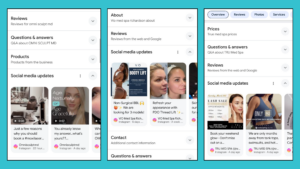
Telehealth experienced massive growth in 2020. Telehealth claims data shows a growth of 2,980% nationally between 2019 and 2020. This means that in 2021, more patients than ever have experienced a telehealth visit, and many of them prefer it. We especially see this among categories like mental health and chronic illnesses.
In addition, the number of telehealth providers has grown dramatically, with many physicians offering telehealth visits, as well as the rise of pure-play telemedicine practices.
Barriers to Growing a Telehealth Business
The primary barrier to growing a telehealth business is the inability to acquire new patients, a prospect that is made tougher by an extremely competitive telemedicine market.
But there are other factors to consider, including unclear pricing, technology limitations, and certain kinds of conditions that don’t as easily lend themselves to telemedicine.
We’ve written before about what businesses should know before starting a telehealth practice.
How Can I Grow My Telehealth Business?
So how do you grow your telehealth business? A solid marketing strategy is a key to increasing awareness of your practice, as well as the targeted acquisition of new patients.
But before you get started with your marketing strategy, there are 4 key elements you need to build a strong foundation for growth.
1. Define Your Telehealth Patient Segment
The most important decision you’ll make is how you define your ideal patient. This may be easy if your telehealth business is only targeting a single condition or treatment, like telepsychiatry, but it may be more difficult if your potential patient base is broader.
Our suggestion is to start with one or two patient segments that are very specific. This is because the more specific you can be with your patients, you can tailor messaging more easily to the problems they care about, as well as more easily target your advertising and content. Simply put, all your marketing will be more effective when it’s geared towards a more deliberate audience.
2. Establish Clear Category Positioning
Telehealth providers must come to the realization that the competitive set is broad – you’re competing against both established telehealth companies and providers offering telehealth as an option. You must show how you’re different and why a patient should choose you. This isn’t as easy as it sounds – because the rise of telehealth is relatively new, there are a variety of price points, for example, that complicate patient decisions.
3. Make the Patient Experience Clear
While a growing number of patients have tried telehealth, it’s still an unfamiliar process for many. One clear requirement to grow your telehealth business is clearly outlining what the process will look like for new patients. Since the process will slightly vary from practice to practice, describing the steps will clearly set expectations prior to the visit and help ensure that a larger % of those booking appointments will show up.
4. Remove Technology Barriers
Lastly, it’s important to make sure the technology platforms you’re using to deliver telehealth are easy to use. Clearly understand any barriers you might be putting in the way – do you require an app download? Does it work on desktop and mobile? Android and IOS? All these technical barriers have the potential to impact not only the number of new patients in your schedule but how many of them show up for appointments and continue to use your telemedicine practice.
How Do I Get Telehealth Clients?
Your marketing strategy is the most important plan for acquiring new telehealth patients. There are a few core strategies that you’ll want to utilize, including SEO, content marketing, and paid advertising. These strategies will form the foundation for your paid and unpaid patient acquisition channels.
SEO for Telehealth
Search engine optimization (SEO) is a key long-term strategy to get telehealth clients. It’s important to remember that while you can begin to rank and see some traffic in just a few months, for most marketers it takes 6 months to a year before you really begin to see results. Your persistence will pay off, as traffic from organic searches on Google will often be some of your highest converting leads.
One thing that’s important to understand is search intent – you need to target the right keywords that signal someone is in market for your specific service. In addition, if you’re focusing on a specific geographic area, you’ll want to make sure the terms you’re focused on are localized to that geographic area. Create your list of target keywords for SEO and begin to create content.
In addition, it’s important to understand that “telehealth” is not a universal term used with patients. Some refer to it as “telemedicine” and others will simply refer to your services as an “online doctor visit.” Do your research to understand the combinations of keywords that make the most sense.
Content Marketing for Telehealth
Blog posts will generally be the best way to create SEO-targeted content, but remember that your content does more than just bring in search traffic.
Great content should educate as well as convert site visitors into leads. Here are a few different content types you should explore in addition to blog posts.
- Video: Video outperforms static content in every way. Invest in creating a video to better educate potential patients, increase conversion rates and time spent on site. A great video can actually improve your SEO.
- Webinars: For medical marketing, webinars can be particularly effective at educating around complex conditions and treatments. When someone has attended a webinar, you know they’ve been thoroughly educated and are more likely to become a new patient.
- Downloads/Guides: Like webinars, downloads like treatment guides will allow you to better educate patients that may not be ready to reach out.
- Assessments: Lastly, we’ve found assessments to be a great content tool to convert site visitors into leads. You learn more about potential patients, and answering questions gets them moving towards a resolution. For spine & orthopedics, for example, we often utilize a “pain assessment” as a lead generation tool.
Advertising Telehealth Platforms
While the above organic marketing strategies will have a long-term payoff, in order to start driving new telehealth clients quickly and to continue to drive new patients in a scalable, repeatable manner, you need to be leveraging paid advertising. This is because while there are no guarantees for rankings in SEO, within a matter of minutes, you can have paid ads running that are targeted specifically towards the patients you want to reach.
There are two paid advertising platforms that every telehealth marketing should be using.
Google search ads are the most targeted form of digital marketing. This is because, unlike every other ad platform, you can target those who are actively searching for what you offer. For example, there are hundreds of searches for “telehealth pain management doctors.” This is an extremely targeted keyword if you offer pain management telehealth visits. You’ll only pay if someone clicks on your ad.
The cost of this advertising will vary depending on the keyword list, as well as the cost-per-click (CPC) for each keyword. “Telemedicine doctor near me” has an average CPC of $8, whereas “telehealth urgent care” has a CPC of $11.
Facebook Ads for Telehealth
In addition to Google search ads, Facebook ads are a must for any telehealth marketer to acquire new patients. While search ads get you in front of those actively looking, they’re text-only ads. Facebook allows you to run image and video ads to reach a broader audience and make them aware of your telehealth services.
Additional Advertising Platforms for Telehealth
There are a few additional advertising platforms to consider if you’ve already maximized your investment in the two core platforms above.
Youtube
As with Facebook, Youtube offers a great opportunity to begin to build your brand visibility. As long as you have good video assets.
Programmatic
There are advanced targeting options available through programmatic advertising. These ads include both image and video ads that run across the web, but leverage a rich ecosystem of third-party targeting data.
Native
Native ads often show up below articles on news sites. They are extremely cost-effective and are good at reaching people early in the patient journey. They require good content to showcase – as you’re usually promoting a blog post.
Telemedicine Marketing Companies
The telehealth space has never been more competitive. Unless you have an internal marketing team that can create best-in-class strategies for brand positioning, SEO, content marketing, and paid advertising, it’s important that you partner with a marketing expert like RUNNER to build a go-to-market strategy for your telehealth practice.
We can help you determine the right positioning, messaging, paid, and organic marketing strategies to scale your new patient acquisition and drive revenue.
Request a consultation to speak with one of our marketing experts about what a partnership with RUNNER might look like.




